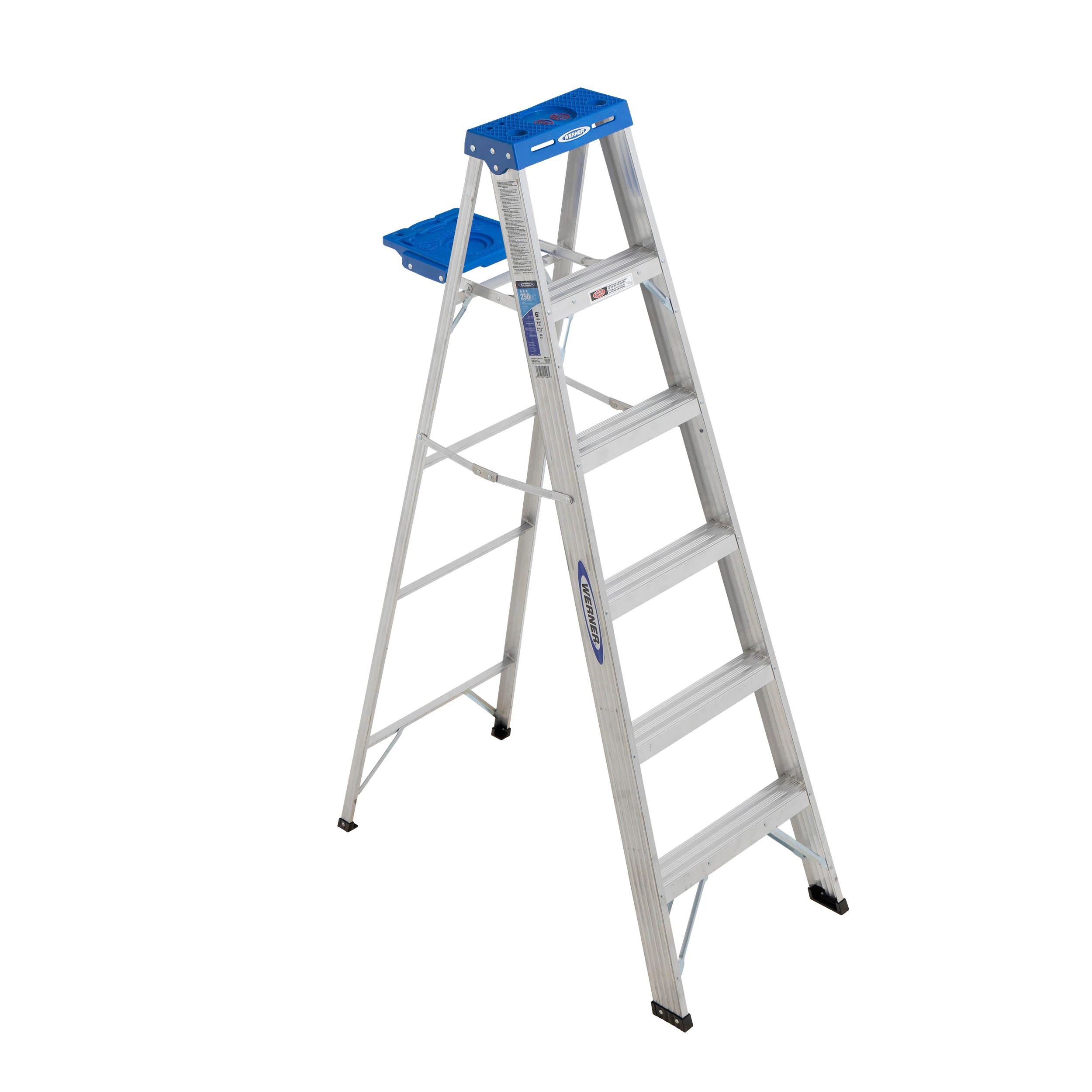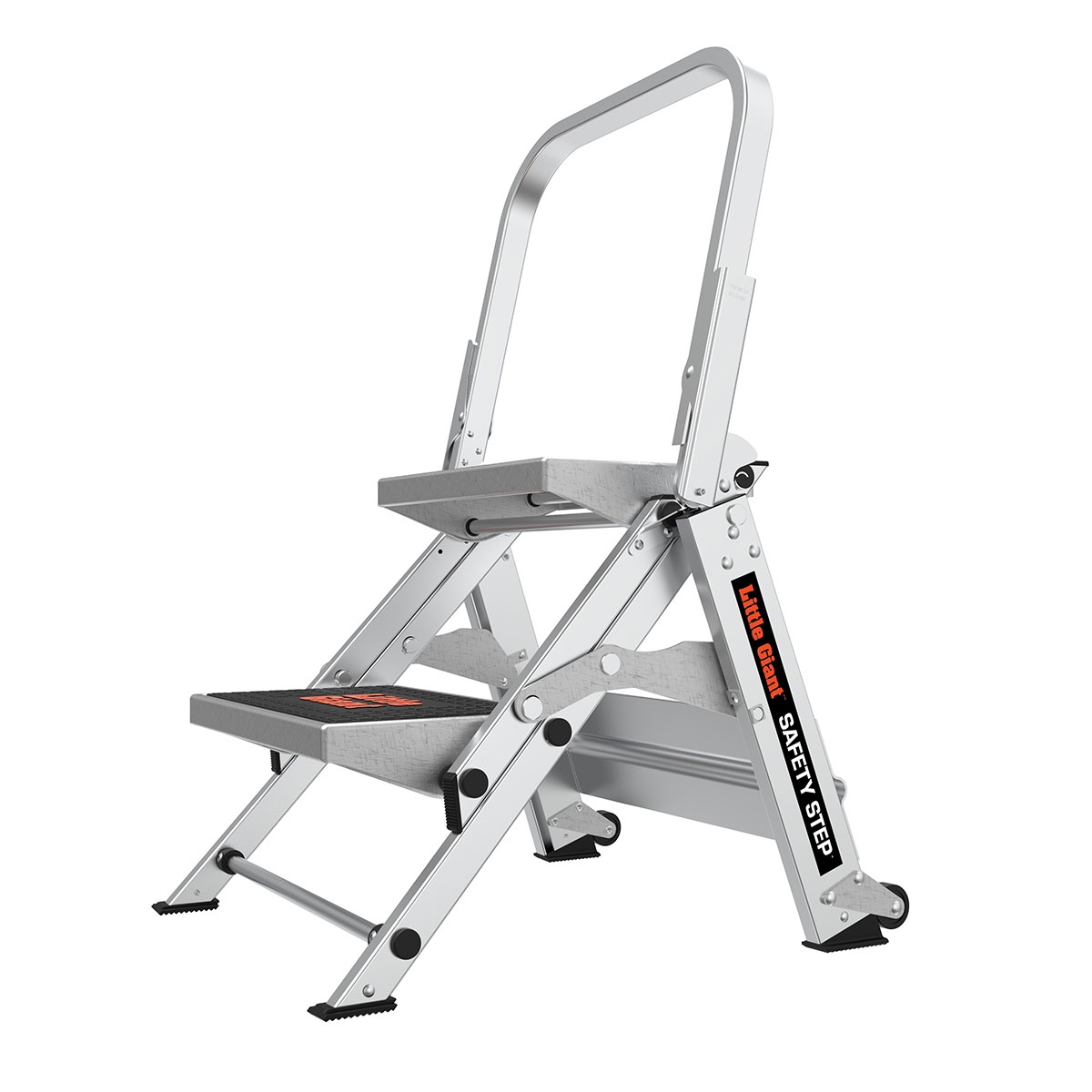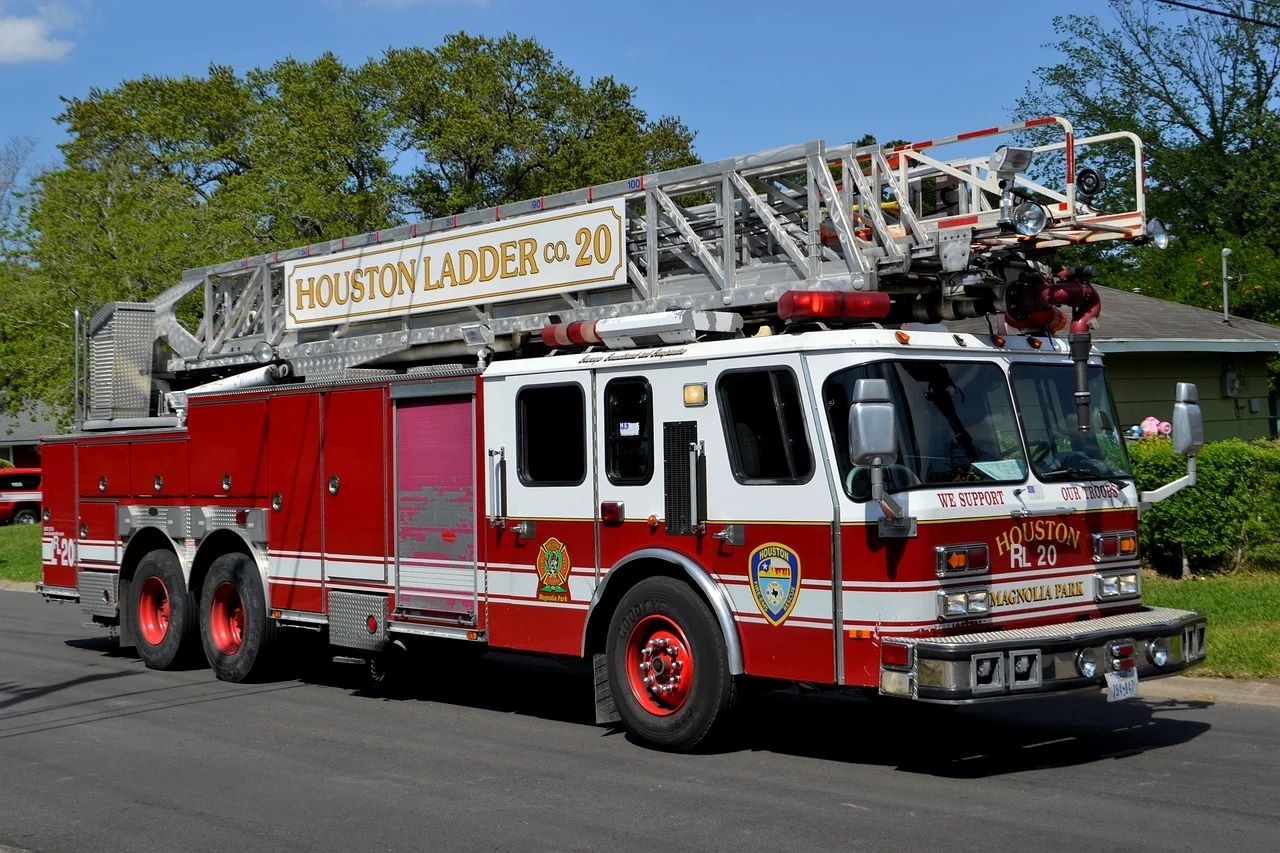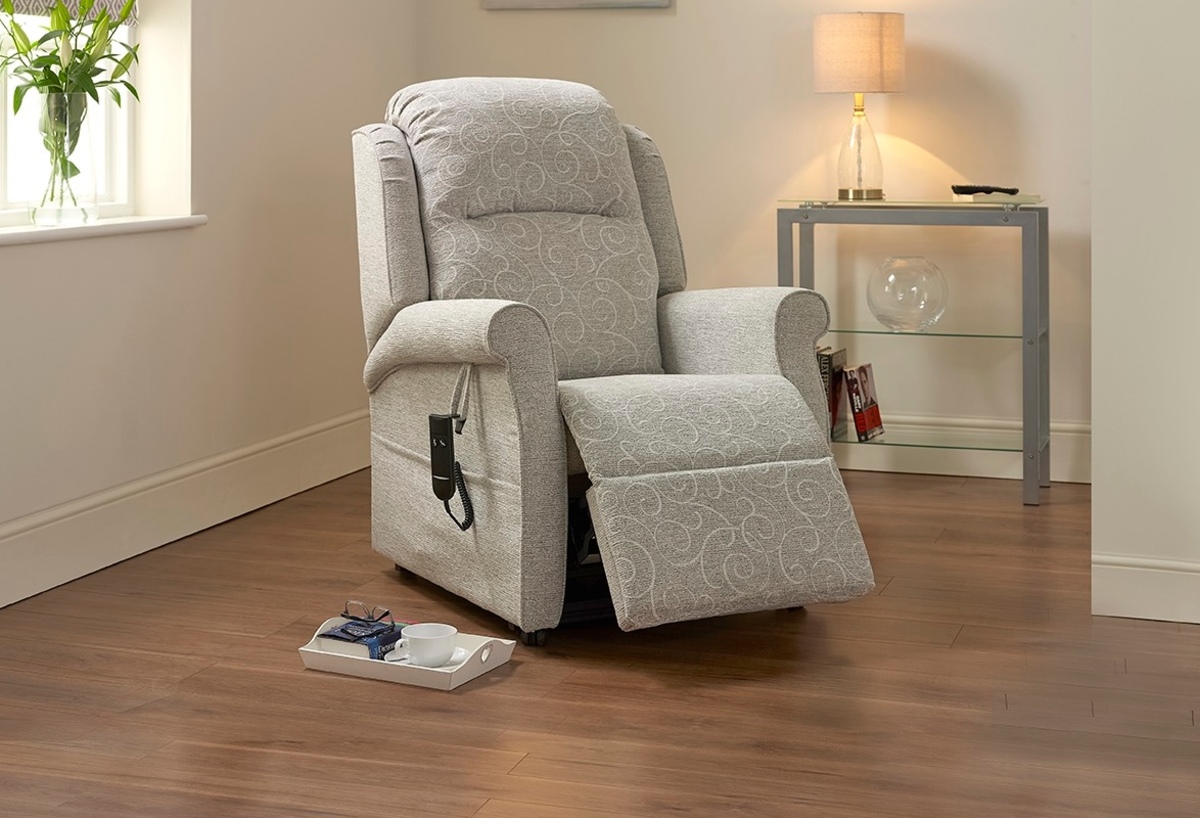

Articles
How Much Does A Ladder Weigh
Modified: February 22, 2024
Find out the weight of different types of ladders in this comprehensive article. Whether you need a lightweight option or a heavy-duty ladder, we've got you covered.
(Many of the links in this article redirect to a specific reviewed product. Your purchase of these products through affiliate links helps to generate commission for Storables.com, at no extra cost. Learn more)
Introduction
A ladder is a versatile tool that is used in various industries, construction sites, and even in households for various tasks such as reaching high places, painting, cleaning, and maintenance work. When considering purchasing or using a ladder, it’s important to understand its weight as it can impact its portability, maneuverability, and overall usability.
In this article, we will delve into the factors that affect ladder weight, explore the material composition of ladders, discuss the weight range of different ladder types, and provide insights into the average weight of common ladder sizes. Additionally, we will highlight lightweight ladder options for easy transportation and heavy-duty ladder options for robust applications.
Understanding the weight of a ladder is crucial for choosing the right ladder type based on your specific needs and requirements. So, let’s jump right in and explore how much a ladder weighs!
Key Takeaways:
- Understanding the weight of a ladder is crucial for choosing the right one based on your specific needs. Factors such as material, size, and additional features impact portability and usability.
- Lightweight options like aluminum and fiberglass ladders offer easy maneuverability, while heavy-duty options like fiberglass extension ladders and steel step ladders provide robust stability for demanding tasks. Always prioritize safety when using ladders.
Read more: How Much Does A 28 Ft Ladder Weigh
Factors Affecting Ladder Weight
The weight of a ladder can vary based on several factors. These factors can influence the overall weight and determine how easy or challenging it might be to handle and transport. Let’s take a closer look at some of the key factors affecting ladder weight:
- Material: The material used in the construction of the ladder plays a significant role in determining its weight. Common materials include aluminum, fiberglass, wood, and steel. Each material has its own weight characteristics, with aluminum typically being lightweight and steel being heavier.
- Size and Length: The size and length of the ladder can also impact its weight. Longer and taller ladders tend to weigh more due to the increased amount of material needed for their construction. Conversely, shorter ladders will generally be lighter.
- Type of Ladder: Different ladder types have varying weight specifications. For example, step ladders, extension ladders, and multi-purpose ladders will have different weight distributions and load-bearing capacities.
- Additional Features and Accessories: Ladders may come with additional features and accessories that can add to their overall weight. This might include built-in tool trays, safety rails, or platform attachments. These extra components can increase the weight of the ladder.
- Weight Capacity: The weight capacity of a ladder refers to the maximum load it can safely support. Ladders with higher weight capacities often have more robust construction and may weigh more due to the reinforced materials used.
It’s important to consider these factors when selecting a ladder to ensure that it meets your specific needs without being overly burdensome in terms of weight. Now that we understand the factors affecting ladder weight, let’s move on to explore the material composition of ladders.
Material Composition of Ladders
Ladders are made from a variety of materials, each with its own unique characteristics, strengths, and weights. Understanding the materials used in ladder construction can help you choose the right ladder for your specific needs. Here are the most common materials used in ladder manufacturing:
- Aluminum: Aluminum ladders are popular due to their lightweight nature. They are easy to transport and maneuver, making them ideal for tasks that require frequent ladder movement. Aluminum also offers excellent corrosion resistance, making it suitable for outdoor or humid environments.
- Fiberglass: Fiberglass ladders are known for their durability and non-conductive properties. They are often chosen for tasks that involve work near electricity. While fiberglass ladders can be heavier than aluminum, they offer robustness and can withstand harsh conditions better.
- Wood: Wood ladders have been used for centuries and are appreciated for their aesthetic appeal and natural strength. However, wood ladders tend to be heavier compared to aluminum or fiberglass ladders. They are commonly used in more traditional settings or for decorative purposes.
- Steel: Steel ladders are exceptionally strong and can handle heavy loads. They are typically used in industrial or commercial settings where durability and load-bearing capacity are crucial. However, steel ladders are the heaviest option available and may not be suitable for regular household use.
When selecting a ladder, it is essential to consider the material composition based on your specific requirements. If portability is a priority, lightweight aluminum or fiberglass ladders would be suitable. For heavy-duty applications, steel or fiberglass ladders with higher weight capacities may be more appropriate.
Now that we understand the materials used in ladder construction, let’s explore the weight range of different ladder types to gain a better understanding of their weight variations.
Weight Range of Different Ladder Types
Ladders come in various types, each designed for specific applications and with their own weight specifications. Let’s take a look at the weight range of some common ladder types:
- Step Ladders: Step ladders are self-supporting with a hinged design. They range in height from a few feet to several feet and are commonly used for tasks such as painting, household chores, or light construction work. The weight of step ladders can vary between 10 pounds (4.5 kg) for smaller, lightweight models to around 40 pounds (18 kg) for larger, more robust options.
- Extension Ladders: Extension ladders are used for reaching higher places and typically consist of two or more sections that can be extended or retracted. They range in height from around 20 feet (6 meters) to 40 feet (12 meters) or more. The weight of extension ladders can vary significantly depending on the length and material, ranging from approximately 25 pounds (11 kg) for shorter aluminum models to 100 pounds (45 kg) or more for longer, heavy-duty fiberglass or steel options.
- Multi-Purpose Ladders: Multi-purpose ladders are versatile and offer various configurations, such as a step ladder, extension ladder, or scaffold. These ladders are adjustable and can be used for a wide range of tasks. The weight of multi-purpose ladders can vary from around 20 pounds (9 kg) for smaller models to 50 pounds (23 kg) or more for larger, heavy-duty versions.
- Platform Ladders: Platform ladders have a platform or a large working surface that provides stability and comfort during tasks. They range in height from a few feet to around 12 feet (3.5 meters). The weight of platform ladders can range from approximately 25 pounds (11 kg) for shorter models to 60 pounds (27 kg) or more for taller versions.
It’s essential to consider the weight of different ladder types to ensure that you choose one that is suitable for your intended use and within your physical capabilities. Now, let’s move on to discuss the average weight of common ladder sizes.
When considering the weight of a ladder, it’s important to factor in the material it’s made of. Aluminum ladders are generally lighter than their fiberglass counterparts, making them easier to transport and maneuver.
Average Weight of Common Ladder Sizes
Understanding the average weight of common ladder sizes can give you a better idea of what to expect when it comes to handling and transporting different ladder lengths. While weights can vary based on materials and specific models, here are some estimates for the average weight of common ladder sizes:
- 4-Foot Ladder: A 4-foot ladder is typically used for low-height tasks. On average, a 4-foot ladder can weigh around 15 to 20 pounds (6.8 to 9 kg).
- 6-Foot Ladder: A 6-foot ladder is a versatile option that can be useful for various indoor and outdoor tasks. The average weight of a 6-foot ladder ranges from 20 to 30 pounds (9 to 13.6 kg).
- 8-Foot Ladder: An 8-foot ladder is commonly used for medium-height tasks. On average, an 8-foot ladder can weigh between 25 to 40 pounds (11 to 18 kg).
- 10-Foot Ladder: A 10-foot ladder provides extended reach for tasks that require working at higher heights. The average weight of a 10-foot ladder falls between 35 to 50 pounds (16 to 23 kg).
- 12-Foot Ladder: A 12-foot ladder is suitable for various construction and maintenance tasks. The average weight of a 12-foot ladder ranges from 40 to 60 pounds (18 to 27 kg).
These weight ranges are approximate and can vary depending on the ladder’s material, construction, and additional features. It’s always recommended to check the specifications provided by the manufacturer for the specific ladder model you are considering.
Now that we have explored the average weights of common ladder sizes, let’s move on to discussing lightweight ladder options for easy transportation.
Read more: How Much Does A 24 Ft Ladder Weigh
Lightweight Ladder Options
For those in need of a ladder that is easy to transport and maneuver, there are several lightweight options available in the market. These ladders offer the advantage of being portable while still providing the necessary height and stability for various tasks. Here are a few popular lightweight ladder options:
- Aluminum Step Ladders: Aluminum step ladders are a popular choice for those seeking a lightweight ladder. They weigh significantly less than their steel or wooden counterparts while still providing the necessary stability for household chores and light construction tasks.
- Fiberglass Step Ladders: Fiberglass step ladders are another lightweight option that offers excellent durability and non-conductive properties. They are suitable for a range of indoor and outdoor applications and provide a sturdy platform for various tasks.
- Telescoping Ladders: Telescoping ladders are designed to be compact and lightweight, making them easy to carry and store. These ladders can extend to various heights and typically feature an aluminum or fiberglass construction, ensuring a balance between portability and stability.
- Platform Step Ladders: Platform step ladders are lightweight and versatile options that provide a large working surface. They are ideal for extended tasks and offer stability and comfort while working at heights.
These lightweight ladder options are designed for convenience without compromising on safety and performance. It’s important to choose a ladder that suits your specific needs and follows the necessary safety guidelines.
Now, let’s explore heavy-duty ladder options for tasks that require more robust and durable ladders.
Heavy-Duty Ladder Options
When it comes to tasks that require a more robust and durable ladder, heavy-duty options are the way to go. These ladders are designed to handle heavy loads and provide additional stability for demanding applications. Here are a few popular heavy-duty ladder options:
- Fiberglass Extension Ladders: Fiberglass extension ladders are known for their strength and durability. These ladders can withstand harsh environments and are perfect for heavy-duty tasks that require extended reach. They offer a high weight capacity and are an excellent choice for construction, maintenance, and industrial applications.
- Steel Step Ladders: Steel step ladders are incredibly sturdy and provide exceptional stability for heavy-duty tasks. They often feature a larger weight capacity and are commonly used in commercial and industrial settings where durability is crucial.
- Multi-Purpose Folding Ladders: Multi-purpose folding ladders are versatile options that can be adjusted into various configurations, such as an extension ladder, step ladder, or scaffold. Some heavy-duty models offer a higher weight capacity and are designed for professional use in demanding environments.
- Industrial Platform Ladders: Industrial platform ladders are heavy-duty options with a large working platform and increased weight capacity. They are commonly used in warehouses, manufacturing facilities, and construction sites where stability and durability are paramount.
These heavy-duty ladder options are built to endure demanding tasks and provide maximum stability and safety. It’s essential to choose a ladder with the appropriate weight capacity and construction materials to ensure it can handle the specific application you have in mind.
Now that we have explored lightweight and heavy-duty ladder options, let’s conclude our discussion.
Conclusion
Understanding the weight of a ladder is essential for selecting the right one for your needs. Factors such as material composition, ladder type, size, and additional features can have a significant impact on the overall weight. By considering these factors, you can choose a ladder that balances durability, portability, and stability.
Aluminum and fiberglass ladders are popular choices for those seeking lightweight options, offering easy maneuverability and transportability without compromising on strength. Telescoping and platform step ladders are also lightweight choices that provide versatility and a larger working surface.
For heavy-duty applications that require robust stability, fiberglass extension ladders, steel step ladders, multi-purpose folding ladders, and industrial platform ladders are suitable options. These heavy-duty ladders offer higher weight capacities and durability to handle demanding tasks in commercial and industrial settings.
When selecting a ladder, it’s important to consider the specific tasks you’ll be performing and assess the weight capacity required. It is also crucial to follow safety guidelines and practices while using ladders to prevent accidents and injuries.
Overall, by understanding the factors affecting ladder weight, knowing the material composition, and considering the weight range of different ladder types, you can make an informed decision when choosing a ladder that suits your needs. Whether you require a lightweight ladder for household chores or a heavy-duty ladder for industrial applications, there are options available to meet your requirements.
Remember, safety should always be a top priority when using ladders. Carefully follow the manufacturer’s guidelines, maintain proper ladder positioning, and use appropriate safety equipment to ensure a secure and accident-free experience.
So, the next time you’re in need of a ladder, take into account its weight and construction to find the perfect tool to assist you in reaching new heights in your tasks and projects.
Frequently Asked Questions about How Much Does A Ladder Weigh
Was this page helpful?
At Storables.com, we guarantee accurate and reliable information. Our content, validated by Expert Board Contributors, is crafted following stringent Editorial Policies. We're committed to providing you with well-researched, expert-backed insights for all your informational needs.















0 thoughts on “How Much Does A Ladder Weigh”